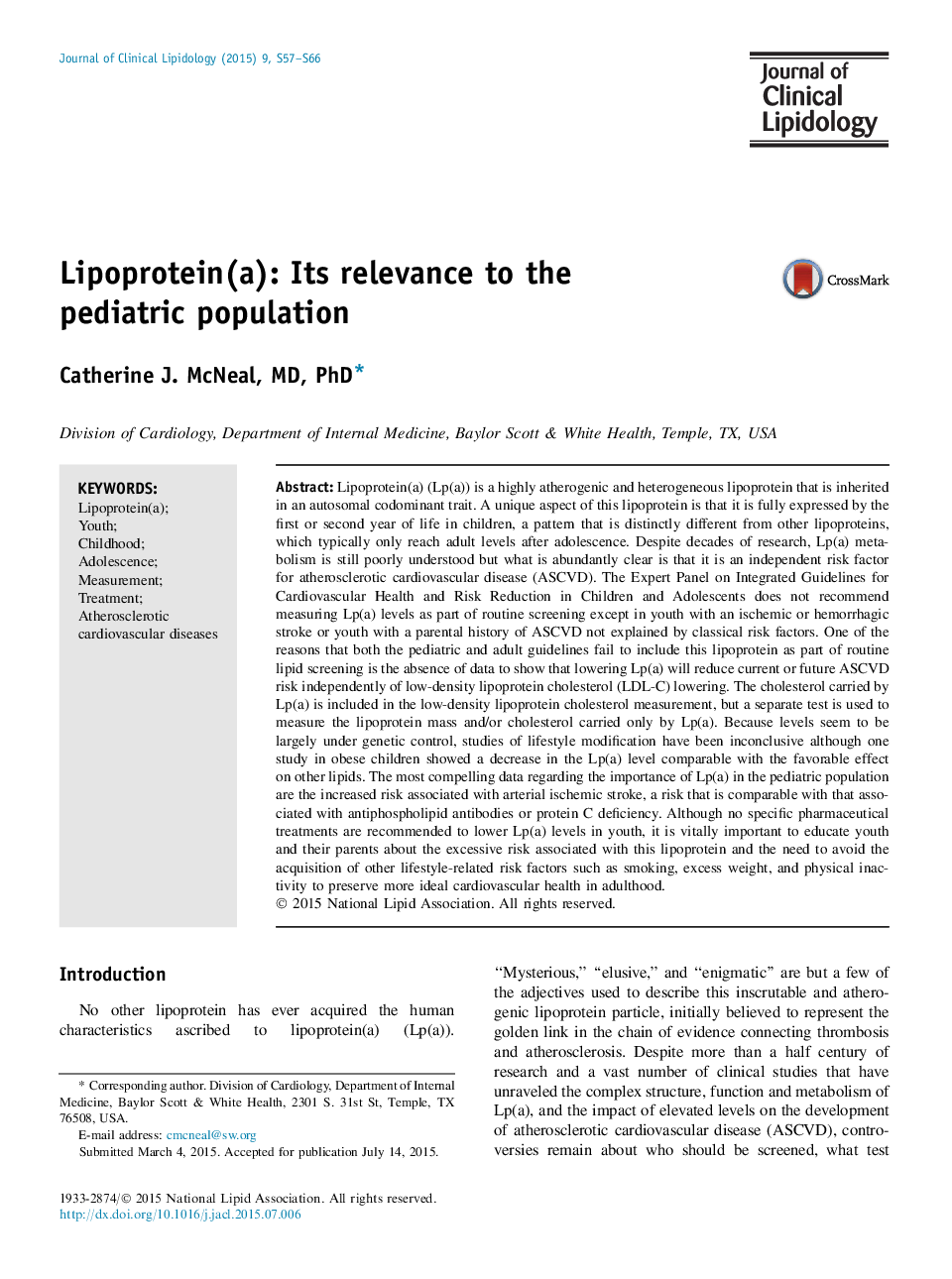| Article ID | Journal | Published Year | Pages | File Type |
|---|---|---|---|---|
| 2965813 | Journal of Clinical Lipidology | 2015 | 10 Pages |
•Lp(a) levels in youth are fully expressed by the first or second year of life.•Lp(a) levels are largely under genetic control with limited impact by dietary changes.•Routine measurement in youth is not recommended except in certain cases.•Lp(a) is associated with an increased risk of arterial ischemic stroke in youth.•Measurement/methods include the lipoprotein mass cholesterol carried by Lp(a).
Lipoprotein(a) (Lp(a)) is a highly atherogenic and heterogeneous lipoprotein that is inherited in an autosomal codominant trait. A unique aspect of this lipoprotein is that it is fully expressed by the first or second year of life in children, a pattern that is distinctly different from other lipoproteins, which typically only reach adult levels after adolescence. Despite decades of research, Lp(a) metabolism is still poorly understood but what is abundantly clear is that it is an independent risk factor for atherosclerotic cardiovascular disease (ASCVD). The Expert Panel on Integrated Guidelines for Cardiovascular Health and Risk Reduction in Children and Adolescents does not recommend measuring Lp(a) levels as part of routine screening except in youth with an ischemic or hemorrhagic stroke or youth with a parental history of ASCVD not explained by classical risk factors. One of the reasons that both the pediatric and adult guidelines fail to include this lipoprotein as part of routine lipid screening is the absence of data to show that lowering Lp(a) will reduce current or future ASCVD risk independently of low-density lipoprotein cholesterol (LDL-C) lowering. The cholesterol carried by Lp(a) is included in the low-density lipoprotein cholesterol measurement, but a separate test is used to measure the lipoprotein mass and/or cholesterol carried only by Lp(a). Because levels seem to be largely under genetic control, studies of lifestyle modification have been inconclusive although one study in obese children showed a decrease in the Lp(a) level comparable with the favorable effect on other lipids. The most compelling data regarding the importance of Lp(a) in the pediatric population are the increased risk associated with arterial ischemic stroke, a risk that is comparable with that associated with antiphospholipid antibodies or protein C deficiency. Although no specific pharmaceutical treatments are recommended to lower Lp(a) levels in youth, it is vitally important to educate youth and their parents about the excessive risk associated with this lipoprotein and the need to avoid the acquisition of other lifestyle-related risk factors such as smoking, excess weight, and physical inactivity to preserve more ideal cardiovascular health in adulthood.
